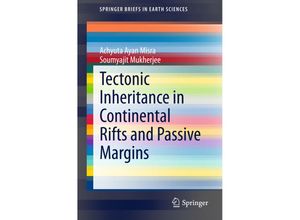This work reviews the mechanism of rifting with a focus on pre-existing tectonic weaknesses in
pre-rift and or basement rocks i.e. on tectonic inheritance. The passive margins that are
studied in this book are the Norwegian Continental Shelf the Eastern North America and the
East and West Indian Continental Margins. The continental rifts that have been analysed are the
East African Rift System the Brazilian Continental Rift Systems and the European Cenozoic Rift
System. It states how rifts and passive margins serve as valuable locations for hydrocarbon
exploration. Tectonic inheritance heritage examines the influence of pre-existing pre-rift
elements on the geometry genesis and propagation of rift-related faults. Such elements include
anisotropies in the shallow crustal levels as well as the rheology of the lithosphere.
Inheritance greatly influences the architecture of rifted passive margins including the
attitude of faults and geometry of horsts (half-) grabens transfer zones etc. Inheritance is
also a determining factor in the width of rifts and rift shoulder topography.

